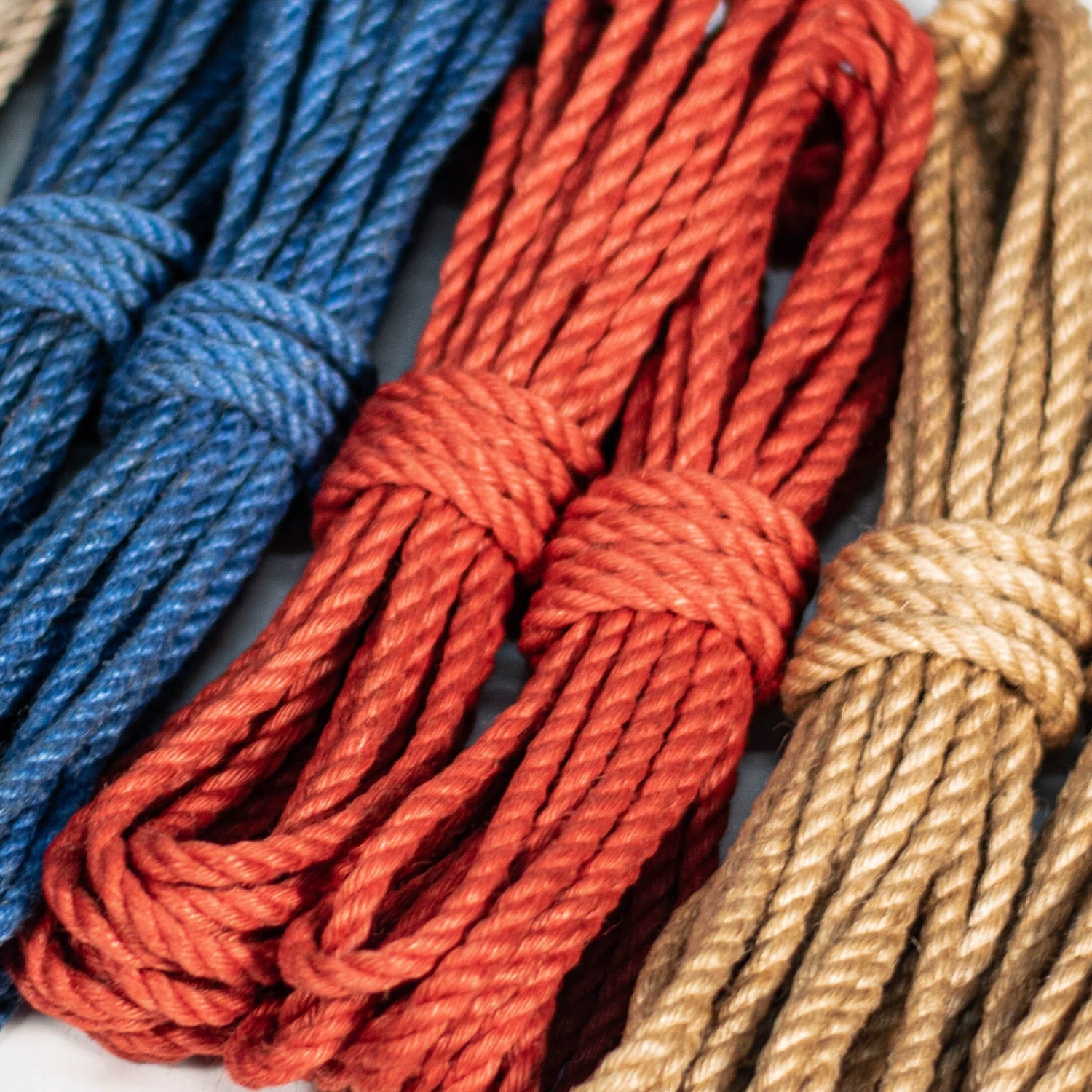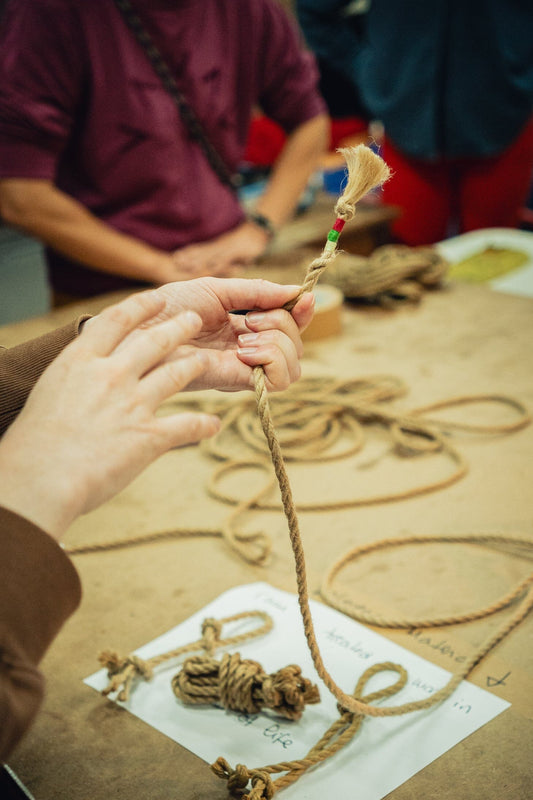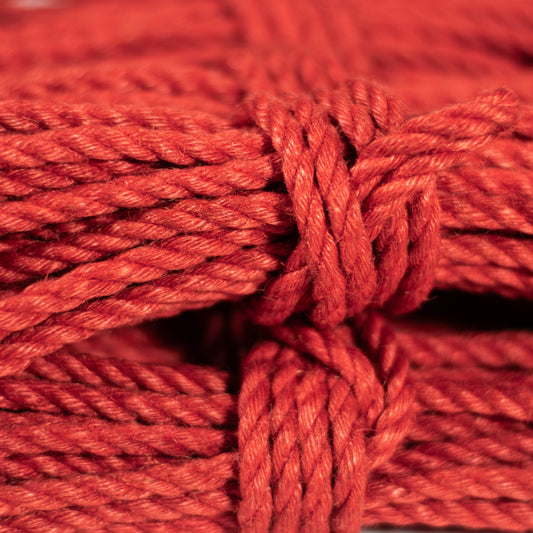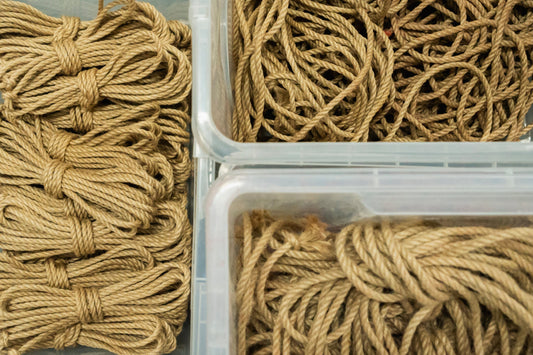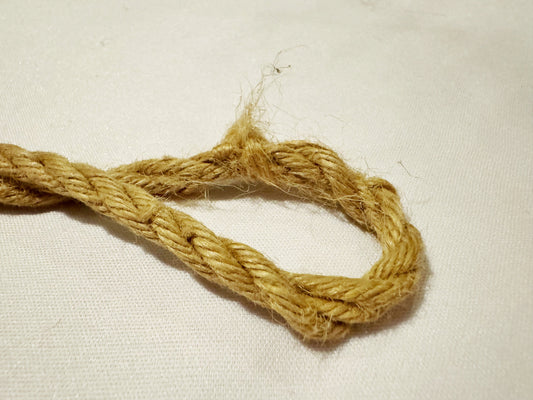Wear and tear is the damage that naturally and inevitably occurs as a result of normal wear or aging. This happens to shibari jute rope too. Have you left your rope unattended and scrunched up in a drawer for years? Then perhaps it has become twisted and dry as a result. Have you been using it daily? Maybe your rope is now super soft but has become a bit thinner and hairier over time.
Let’s look at some signs that it may be time to retire your rope:
-
Is your rope "hairy"?
If your rope isn’t brand new, used to be perfectly smooth and silky (as it does with use), but is now starting to look a bit hairy again, this might be a sign it’s time to retire it as a suspension line.
The hairiness you see at this stage is not the usual fuzziness you see when the rope is new and has lots of surface fluff. The hairiness at this older stage is more likely to be small broken strands and fibres that occur naturally as a result of use. The rope may otherwise look fine, but its integrity is starting to become compromised and weakened.
If the rope still feels nice to tie with, cycle it (like a pro) for use on skin and harnesses, but avoid using it as a suspension line.
-
Thickness
Assuming your rope started off even in thickness (usually around 6mm), and is now looking more like a 5mm rope, perhaps even uneven in thickness throughout, then this might be a sign it’s time to retire it.
The place where you might notice the biggest difference is the bight, as this is the section of the rope that gets the most use. We don’t tend to pass through the bight when building out suspension lines, especially not for mainlines (i.e. the line that holds most or all of a person’s weight), but a very worn bight is usually an indicator of substantial wear and tear on the rope in general, and we would recommend not using it for suspension.
Again, if it otherwise feels nice to tie with, use it for the body and to tie harnesses.
-
Uneven strands
The usual construction for shibari jute ropes is made of 3 strands, which you can clearly see when you twist the rope in the opposite direction to the strands. When you do this, you should clearly see 3 equally sized strands throughout the length of the rope.
If you start to notice the strands are uneven in places or sections of your rope, it can mean that one of the strands has been pulled out of place and is now under more tension than the other 2. Sometimes, this can give the appearance of the rope being bumpy or strands being bunched together. We usually call this "high stranding."
In some cases, this can be fixed with some clever techniques, but you shouldn’t ignore it or use it as is because it effectively means that only one strand (instead of 3) will be holding the weight in suspension.
Jute rope constructed for shibari relies on redundancy, meaning meaning that the strength of the rope comes from the collective support of all its strands. Each of the three strands is essential for holding weight and maintaining the integrity of the rope. If one strand is compromised, the other two still share the load, helping to prevent breakage. When one strand becomes uneven or more tense, it creates an imbalance, reducing the rope's overall strength and safety. This is why it's important to address any issues with the strands before using the rope for suspension.
-
Dryness
Dry ropes break more easily. The oils we put into the rope—whether these are absorbed through use on the body, or through processing them with oils and waxes—are there to protect the rope by giving grip to the fibres. Oils help the fibres stick together and give the rope its integrity and strength.
Extremely dry ropes feel a bit like straw: crunchy and brittle. You definitely don’t want to suspend with rope that feels this way, so oil them before use, or use them frequently on bare skin until they feel oiled.
In sum:
Rope maintenance is crucial for both safety and performance in shibari. By regularly checking for signs of wear and tear, you can ensure that your ropes remain reliable and safe for use - especially as suspension lines.
Always remember that a well-maintained rope will not only make the process of tying easier and more pleasurable but will also prevent accidents and enhance the longevity of your kit.
If your rope is showing signs of damage or excessive wear, it's better to retire it as suspension lines and give it a new role in your kit, either as body ropes only or by cutting around the damaged areas and turning it into bits.
